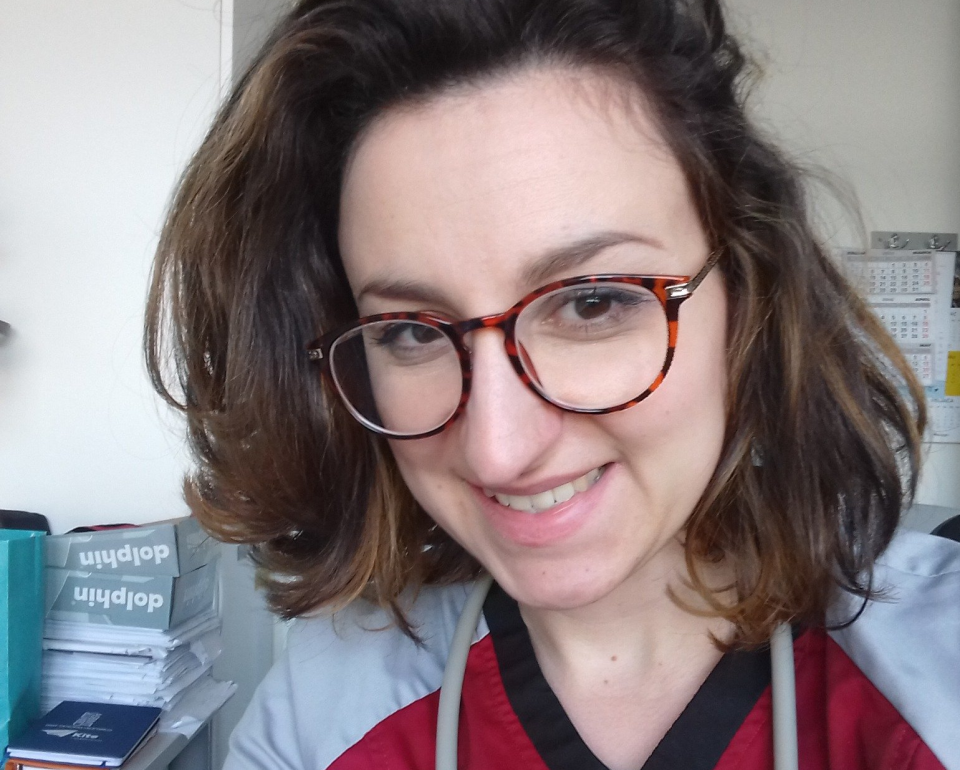Burnout - it doesn't just happen to someone else

Burnout - it doesn't just happen to someone else
By Dr. med. Ana Zelić Kerep
The story of my experience with burnout syndrome, what I wish I did sooner, what I wish I knew, and what I wish people around me knew.
What is burnout syndrome, anyway?
According to the 11th revision of the International Classification of Disorders (ICD-11), burnout syndrome is an occupational hazard. Even though it is included in the chapter: ‘Factors influencing health status or contact with health services’, it is not classified as a medical condition.
It is defined as follows: “Burn-out is a syndrome conceptualized as resulting from chronic workplace stress that has not been successfully managed. It is characterized by three dimensions: feelings of energy depletion or exhaustion; increased mental distance from one’s job, or feelings of negativism or cynicism related to one's job; and reduced professional efficacy. Burn-out refers specifically to phenomena in the occupational context and should not be applied to describe experiences in other areas of life˝(1). Even though research and data are abundant, burnout doesn´t seem to be the focus of health policymakers.
In other words, burnout is the result of chronic stress connected to an emotionally challenging workplace, without adequate emotional resources. Sounds familiar? It should, since it is reported worldwide that about 50% of physicians experience it (2–4), which means you have a chance of witnessing it one way or another.
Burnout is measured by the Maslach Burnout Inventory, the Human Services Survey, which can be applied to medical professionals. Three domains are self-reported and scored in this instrument: emotional exhaustion, depersonalization, and accomplishment domain (emotional exhaustion scores of 27 or greater, depersonalization scores of 10 or greater and personal accomplishment scores of 33 or less are thought to strongly suggest burnout).
Research shows that emotional exhaustion is at the core of burnout, resulting in depersonalization and lower work efficacy, as well as diminished overall well-being (5). Also, it is known that more burnout means more medical error (5) and higher healthcare costs in general (1). Furthermore, medical errors contribute to burnout, perpetuating this vicious cycle (6). Factors associated with physician burnout are constraining organizational structures, inpatient specialties, and unique personal susceptibility to stress and emotional exhaustion (1).
My story
My experience with burnout happened five years ago. I remember one day just feeling like I couldn´t get out of bed and go to work. Looking back, I see now that the workload was far too much for anyone to handle. I didn´t know how to deal with that kind of stress, and I didn´t recognize the signs years before I got to what felt like the end of the road for me.
It didn’t happen overnight. It took some time before I realized I had to put in the effort to stop thinking about the patients I saw that day. I couldn’t unwind and go to sleep, and even when I did, I dreamt about them. My work consumed me.
A couple of factors played into what became a struggle to find joy in work and life again. As I mentioned, the workload was too much (an average of 100 consultations daily). I wanted every single one to be done perfectly. I didn’t give myself the luxury of lunch breaks. The pressure came from multiple sources: the healthcare system (you always needed to work more and generate reimbursement and not exceed any quotas or budgets), the patients, and lastly, from myself. At the same time, stressors from other areas of life clustered leaving me unable to breathe and recuperate. This toxic combination lead to me simply burning out. Emotionally I was a wreck. I had trouble focusing on the simplest tasks, my memory was not as sharp as before, and my self-confidence plummeted. I felt the consequences physically as well, as I was getting sick all the time.
From being inspired, driven, creative, athletic and full of life, I became someone I didn’t recognize. It took years for me to feel like myself again.
However, since hindsight is 20/20, I learned some things I want to share. Here are some simple rules to avoid burnout or to heal if you are already feeling its effects in your life.
- Put your needs first.
It is not selfish to acknowledge that you need to nurture yourself before you can do it for anyone else. - Learn to say no, or at least, not right now.
As a young professional, you want to please everyone and prove yourself. It is ok to say ˝no˝ every once in a while. Or at least not right now. You will be more productive in the long run, and also happier and healthier. - Eat, hydrate and exercise.
Sounds pretty obvious; however, I found myself forgetting to do these things a lot. You recommend to your patients that they look after themselves, so you should treat yourself as equally valuable of such efforts. - Give yourself time to process difficult days.
We have all had these. Never ending days when everything seems to gravitate towards a catastrophic outcome. Take an afternoon off. That manuscript can wait – your mental health, on the other hand, can’t. - Seek professional help.
If you are recognizing signs of burnout, do not hesitate to seek help and guidance. Your future self will be very grateful.
A happy doctor is a good doctor. Don’t forget to live while pursuing a career. Prioritize and strategize your goals. Know your limits and be vigilant of your mental health. The purpose of this blog post is to raise awareness of this issue and also to reach out to anyone dealing with burnout. Sharing your struggles and experiences is very helpful. If you feel like my experience speaks to you, do not hesitate to reach out to me. Healing starts by recognizing.
References:
- West CP, Dyrbye LN, Shanafelt TD. Physician burnout: contributors, consequences and solutions [Internet]. Vol. 283, Journal of Internal Medicine. Blackwell Publishing Ltd; 2018 [cited 2020 Mar 8]. p. 516–29. Available from: http://doi.wiley.com/10.1111/joim.12752
- Kristensen: The Copenhagen Burnout Inventory: A new... - Google Scholar [Internet]. [cited 2020 Mar 8]. Available from: https://scholar.google.com/scholar_lookup?hl=en&volume=19&publication_year=2005&pages=192-207&journal=Work+Stress&author=TS+Kristensen&author=M+Borritz&author=E+Villadsen&author=KB+Christensen&title=The+Copenhagen+Burnout+Inventory%3A+a+new+tool+for+the+assessment+of+burnout
- Burnout and Perceived Quality of Care Among German Clinicians in Surgery - PubMed [Internet]. [cited 2020 Mar 8]. Available from: https://pubmed.ncbi.nlm.nih.gov/20935011-burnout-and-perceived-quality-of-care-among-german-clinicians-in-surgery/?dopt=Abstract
- Linzer M, Visser MRM, Oort FJ, Smets EMA, McMurray JE, De Haes HCJM. Predicting and preventing physician burnout: Results from the United States and the Netherlands. Am J Med. 2001 Aug 1;111(2):170–5.
- Lee RT, Seo B, Hladkyj S, Lovell BL, Schwartzmann L. Correlates of physician burnout across regions and specialties: A meta-analysis. Hum Resour Health. 2013 Sep 28;11(1).
- Robertson JJ, Long B. Suffering in Silence: Medical Error and its Impact on Health Care Providers. J Emerg Med. 2018 Apr 1;54(4):402–9.



 Back
Back